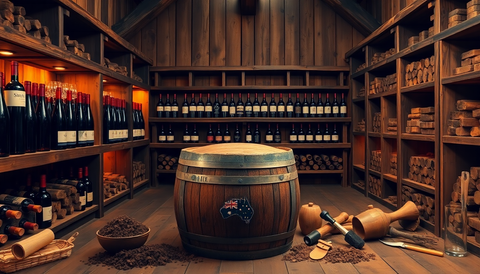In the ever-evolving world of wine, one thing remains constant - the intricate web of regulations and laws that govern its production, distribution, and consumption. While some of these laws are rooted in history and tradition, others can seem downright bizarre to the uninitiated. Join us as we embark on a global journey to uncover some of the weirdest wine laws that will leave you scratching your head.
Grape Expectations: Unusual Varietal Restrictions
The world of wine is a diverse tapestry, with each region boasting its own unique grape varieties and blends. However, some countries have taken this concept to the extreme, imposing strict regulations on the types of grapes that can be used in winemaking.
In Greece, for instance, the production of retsina - a distinctive resin-infused white wine - is legally required to use the Savatiano grape variety. Deviation from this rule can result in hefty fines and even the confiscation of the offending bottles. Similarly, in Hungary, the famous Tokaji Aszú wines must be made exclusively from the Furmint, Hárslevelű, and Sárgamuskotály grape varieties.
Across the Atlantic, the United States has its own peculiarities when it comes to grape regulations. In California, winemakers are prohibited from using the term "Champagne" to describe their sparkling wines, as this designation is reserved for the iconic bubbly from the Champagne region of France. Instead, they must use alternative terms like "méthode champenoise" or "traditional method" to describe their production process.
Bottling Bans and Bizarre Restrictions
The intricacies of wine laws don't stop at grape varieties; they extend to the very containers that hold the precious liquid. In certain parts of the world, winemakers face a myriad of restrictions when it comes to the type and size of bottles they can use.
In South Africa, for example, the sale of wine in containers larger than 5 liters is strictly prohibited, a rule that has its roots in the country's apartheid-era policies. Meanwhile, in Thailand, the government has banned the use of glass bottles for domestic wine production, forcing winemakers to rely on alternative packaging materials like plastic or tetra paks.
The United Arab Emirates takes this concept to the extreme, with a complete ban on the sale of alcohol in the country. While visitors can purchase and consume alcohol in designated hotel bars and restaurants, the transportation of wine or any other alcoholic beverages across the UAE's borders is strictly forbidden.
Labeling Limitations and Linguistic Landmines
In the world of wine, the label on the bottle is more than just a pretty face – it's a carefully crafted representation of the wine's origin, grape composition, and production methods. However, some countries have taken this concept to the extreme, imposing strict regulations on the information that can be displayed on wine labels.
In France, for instance, the use of the term "Champagne" is fiercely guarded, with strict rules governing the geographic origin, grape varieties, and production methods that must be followed to earn this prestigious designation. Winemakers who attempt to use the term "Champagne" without meeting these stringent requirements can face legal action and hefty fines.
Across the border in Germany, the labeling rules are equally complex. Winemakers must adhere to a strict hierarchy of quality designations, such as Qualitätswein, Kabinett, and Spätlese, each with its own set of requirements. Failure to comply can result in the wine being stripped of its designated classification.
Taxation Tribulations and Tariff Troubles
Wine enthusiasts around the world often lament the high prices of their favorite bottles, but in some countries, the culprit behind these inflated costs may not be the wine itself, but rather the complex web of taxes and tariffs that govern the industry.
In Norway, for example, the government imposes a staggering tax on all alcoholic beverages, including wine. This tax can account for up to 80% of the final retail price, making a bottle of wine that would cost $10 in the United States potentially cost $50 or more in Norway.
Across the pond, the United States has its own unique set of wine taxation challenges. Each state has the authority to set its own excise tax rates on wine, leading to a patchwork of regulations that can vary significantly from one state to the next. This can create headaches for winemakers and consumers alike, as they navigate the complex landscape of interstate wine shipping and distribution.
Conclusion: Raising a Glass to the Absurd
As we've seen, the world of wine is a veritable minefield of bizarre regulations and quirky laws, each one more peculiar than the last. From grape variety restrictions to labeling limitations, the wine industry is a testament to the enduring power of bureaucracy and the human capacity for creating complex systems.
Yet, despite these challenges, the global wine community continues to thrive, with winemakers and enthusiasts alike finding creative ways to navigate the ever-changing landscape of wine laws. So, the next time you raise a glass of your favorite vintage, take a moment to appreciate the rich tapestry of regulations and traditions that have shaped the wine industry, and perhaps even a chuckle at the sheer absurdity of it all.




Comments (0)
There are no comments for this article. Be the first one to leave a message!